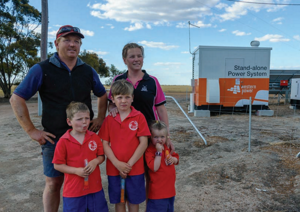Charging up electric vehicle benefits
Understanding how and when electric vehicle (EV) owners charge their cars is important so electricity networks can assess and manage the impact of EVs on the grid. A new project has investigated international and national experience and offers valuable learnings. We take a look.
Charging Behaviour and Location
A recent report by the University of Melbourne provided a comprehensive review of EV owners’ preferences and charging behaviour based on national and international experience. The report is part of the EV Integration Project which is being undertaken by the University of Melbourne, funded by Energy Networks Australia (ENA), the Centre for New Energy Technologies (C4NET) and the Australian Power Institute (API).
The report suggests the charging location, frequency level and time, coupled with individual and contextual factors, all determine the impact that charging an EV has on the electricity grid.
The frequency of EV charging is most likely to be influenced by the battery range of the vehicle, as well as driving patterns. The availability of public charging infrastructure may impact charging location choices. Decisions about charging location may also be based on convenience and, together with electricity demand management programs, is likely to influence the time of day that the vehicle will be plugged into charging infrastructure
Sizes and types of EV chargers are shown in Table 1 below. Level 1 and 2 chargers are used for homes and public parking, while Level 3 chargers are used in the street for en route charging.
Table 1. Sizes of EV Charger Types
Home charging accounts for the largest share of EV charging in most countries, with most studies estimating that between 50 per cent and 90 per cent of charging events occur at home. Owners of battery electric vehicles (BEVs) with driving ranges greater than 320 kilometres, as well as EV users whose homes are powered by solar panels, are more likely to rely heavily on home charging.
Furthermore, studies regarding the use of vehicles in urban areas demonstrated that suburban residents tended to have longer commutes and drove about 80 per cent longer distances than their city counterparts. Combined with a highly localised distribution of EVs in suburban spaces, these factors increased the volatility of charging load curves and created higher localised peaks, which may affect the distribution network.
Level 3 public charging is highly preferred by EV users in dense urban areas, where the share of EV users with home charging is very low. Otherwise, in places where home charging is common, Level 3 charging is seen as relevant mostly in long-distance travel corridors.
Understanding when and where EV owners prefer to charge their vehicles will help network operators explore better ways to utilise the charging behaviours to support the grid.
Supporting the Grid through EVs
Managed EV Public Chargers
Managed fast public chargers can play a role in stabilising the grid and absorbing large amounts of renewable energy at low demand and high residential solar generation periods.
The Chargefox charger located in Gundagai, NSW, may be used as an example of a public managed smart EV charger, one of 22 ultra-rapid Chargefox public chargers which have been installed this year between Brisbane, Sydney, Melbourne and Adelaide.
This smart public charger can measure the total load on the network, calculate the available power and adjust the electricity taken from the grid. Such dynamic chargers can support the grid by reducing loads during high demand periods.
Coupling battery storage systems and renewable energy sources with these fast-charging stations will help lower peak demand and make demand generally smoother and more predictable. These stations have been installed in Euroa, Goulburn and Torquay charging sites.
Managed Home Chargers
The challenge to the wide-scale deployment of EVs is in identifying where they could cluster on the network and whether they would be available at peak demand periods to provide support to the grid.
One of the possible solutions to tackle this challenge is use smart chargers with remote control functionality, which allows network operators to remotely control charging and reduce load on the grid to manage demand.
Jemena is partnering with AusNet, United Energy, Evoenergy and TasNetworks in a trial project to understand the benefits of smart chargers with remote control functionality. This trial will provide a blueprint for electricity distributors to communicate with home EV chargers and enable charging when the demand for, and price of, electricity is low.
Vehicle-to-Grid (V2G)
Chargers and EVs with V2G capability could further support the grid by providing frequency control ancillary services (FCAS). V2G could also be used to provide back-up power for homes, or as an uninterruptible power supply (UPS) for commercial loads.
These EVs, when connected to the grid, act just like a residential battery system, enabling energy to be stored and sold back to the grid during peak demand periods.
ActewAGL is undertaking a trial project funded by the Australian Renewable Energy Agency (ARENA) in collaboration with the Australian National University (ANU), Evoenergy, ACT Government, Nissan, JET Charge and SG Fleet. This aims at understanding how V2G capability could reduce the cost of owning and operating an EV by incentivising owners to supply energy back to the grid.
What is clear from the work so far is that faster uptake of EVs in Australia depends on some key factors. Customers need to be more comfortable with the technology, networks must better understand the impacts on the grid, vehicle prices need to fall, and their availability needs to increase.



